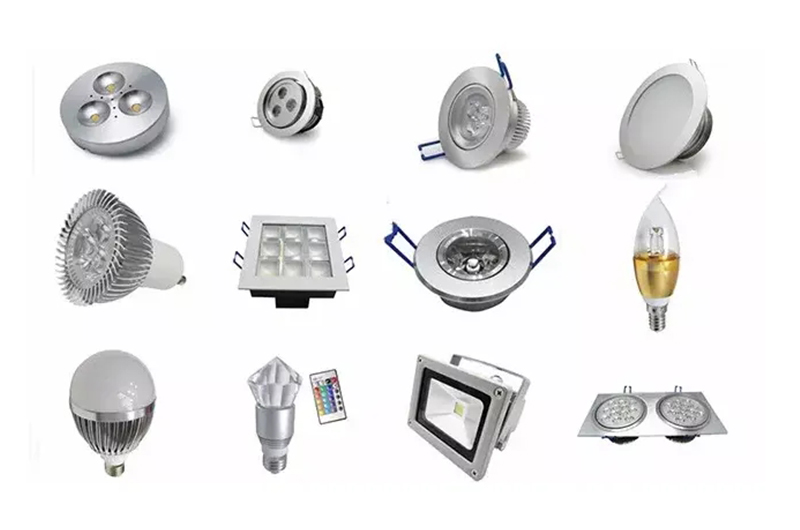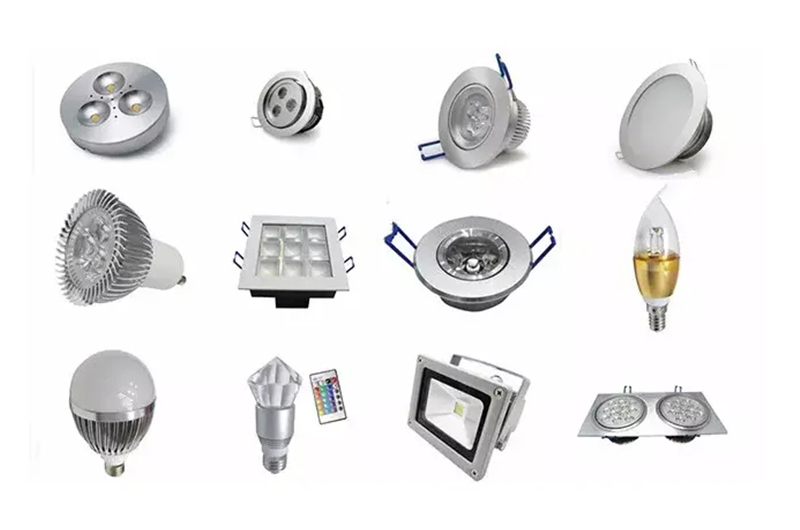Introduction of aluminum alloy in LED lampsThe quality of the heat dissipation effect is closely related to the heat dissipation method of the LED lamp, the form of the shell, the application of the heat dissipation material and the use environment. High-cost performance is unique in the field of LED lighting heat dissipation materials...
Introduction of aluminum alloy in LED lamps
The quality of the heat dissipation effect is closely related to the heat dissipation method of the LED lamp, the form of the shell, the application of the heat dissipation material and the use environment. High-cost performance is unique in the field of LED lighting heat dissipation materials.

Application of aluminum alloy in LED lamps
According to the forming form, the application forms of aluminum alloy in LED lamps mainly include: die-casting aluminum, aluminum profile, forged aluminum, aluminum plate (stamping forming), etc.
- Die-casting aluminum
The die-casting aluminum forming method is die-casting, and its biggest feature is high pressure and high speed. The molten aluminum alloy maintains high fluidity under high pressure and high speed, so that the filling time is short, the cooling rate is fast, the production efficiency is high, and parts with complex shapes and thin walls and deep cavities can be formed. Therefore, die-casting aluminum is widely used in the design of LED lamps. Such as street lights, flood lights, tunnel lights, bulb lights, downlights, etc. Especially in the integrated design of LED outdoor lamps (the shell is used for heat dissipation and the carrier of other components), it is very popular.
- Aluminum profile
Aluminum profiles are formed alloy materials, referred to as extruded aluminum or aluminum extrusion, which are formed by extrusion or drawing. Generally, drawing is cold working without heating, while extrusion is hot working.
Aluminum profiles are widely used in the optical and driving modular design of LED lamps. In addition to the application of aluminum profiles in LED fluorescent lamps and lighting decorations, the application of aluminum profiles in LED outdoor lighting module radiators will also become more and more extensive.
- Forged aluminum
Forging aluminum is using the plasticity of the material to produce plastic deformation with the help of the external force of the high-speed hammer, and obtain a processing method of forgings with certain structure properties, shape and size. Forging production can not only obtain the shape of mechanical parts, but also improve the internal structure of the material and improve the mechanical properties, and its performance is higher than that of die castings, cutting parts and welding parts.
At present, the lamps that use forged shells mainly include LED spotlights and bulb lamps, as shown in Figure 6. Because the cost of forging is higher than that of casting, the shell volume is relatively small. With the decline of forging costs, such small and complex forged aluminum housings like bulbs and spotlights may have a certain impact on the die-casting aluminum housing market.
- Aluminum plate
In the design of LED lamps, aluminum plates are widely used, and the main processing method is stamping. Such as PCB aluminum substrates, downlights, high-end panel lamp housings, and even the heat sinks of individual bulbs. However, when the aluminum plate is used in indoor LED lamps, the focus is not on heat dissipation, but on its lightness and aesthetics. Because the power of the lamps is relatively small, in order to play a role in home decoration, the volume is relatively large.













